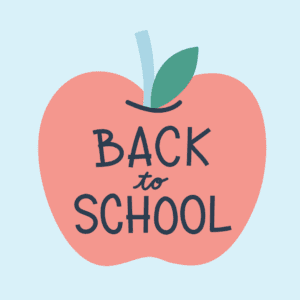Have you ever been the new kid? I had to change schools in fifth grade due to school zoning changes, leaving all my friends and the only school I had ever attended. As a result, I can recall the uncertainty I had about starting over with strangers in an unfamiliar place. As school counselors, we can work to help new students make a smooth transition by providing multiple levels of support.
NEW STUDENTS CHANGING SCHOOLS
Student mobility is a topic of research because of its possible effect on student achievement and future success. Accountability for schools in meeting the needs of homeless youth was addressed in a 2016 brief for Every Student Succeeds Act (ESSA). Students in foster care and economically disadvantaged students are affected by multiple school changes. In addition, another group with high student mobility are military families.
Students need support regardless of the reason they are changing schools. Having a comprehensive approach for outreach to new students has far-reaching benefits for the students and their families, the school, and the community.
PLAN FOR NEW STUDENTS
It truly does take a village when developing a plan for new students. It is important to have different stakeholders involved, beginning with admin. Once they are on board, you can develop your support system for the students and their families. Here are some things to do:
Choose a group of student leaders to be your new student team. You may already have student ambassadors or student government reps in place.
Decide how to assign student leaders to new students. Grade level, student schedule, and student interests are things to consider.
Determine what the new student helper will do. Possible things would be to help the new student follow their schedule on their first day, introduce them to others, help them find their locker, find a seat at lunch, and follow up with them during the next few weeks.
PREPARE FOR NEW STUDENTS
After your plan is in place, your student team and school personnel need to be trained. Students may need to role-play what they will say and how they will help students. Some new students will be a challenge to talk to. Student leaders will need to be prepared for this. School personnel, including office staff and teachers, will need to know their role. Here are some ideas:
Train student leaders during the first weeks of school.
Develop a new parent FAQ handout.
Plan a Coffee with the Counselor parent meeting.
Meet with teachers to review new student procedures
KNOW YOUR NEW STUDENTS
It helps to know your new students. Here are some things to do to be informed:
Work with your registrar to get information from your student management system. Subgroups, academics, discipline, and attendance should be noted.
Review registration paperwork.
Read IEP or 504 info ASAP.
NEW STUDENT CONTACT
New students will respond differently to changing schools. Some will come in the first day and find their place. Others may struggle to fit in or not perform well academically. Small groups are a great way to meet these various needs. Here are some ideas for points of contact:
Plan lunch meet-ups with new students and student leaders. Send out personalized invites to the new students, plan an ice breaker or team building activity and have an open-ended Q & A.
Organize new student small groups that meet for a few weeks to address specific topics, like organization, study skills, family changes, and friendship skills.
Do individual check-ins with students who may need more support.
PARENTS OF NEW STUDENTS
The parents of new students are deeply concerned for their kids. The change in schools affects them too. Try to develop a relationship with parents of new students to work toward success. Some things to do:
Provide parents with your school contact info and follow up with a phone call or email within the first few days.
Distribute the new parent FAQ handout.
Publicize your Coffee with the Counselor parent meeting with morning/night time options.
Write a note welcoming the family to your school and send in the mail.
CLASSROOM STRATEGIES FOR NEW STUDENTS
The classroom teacher plays a vital role in welcoming new students. As counselors, we intuitively think about how to help students adjust, while classroom teachers may need some reminders. Here are some classroom strategies that will promote a positive transition for new students.
Have helpers assigned to new students.
Give classroom documents to new students (have a new student info pack): parent letter, discipline plan, grading procedures, classroom rules, etc.
Group all students intentionally.
Read IEP or 504 info ASAP.
Do check-ins with new students.
Contact parent via phone or email the first few days after the student arrives.
Providing multiple levels of support and having a variety of contact points for new students and their families is necessary for a successful change in schools. What kinds of things do you do to help new students?
Check out this post from EduKate & Inspire with 5 Tips to Welcome New Students!







